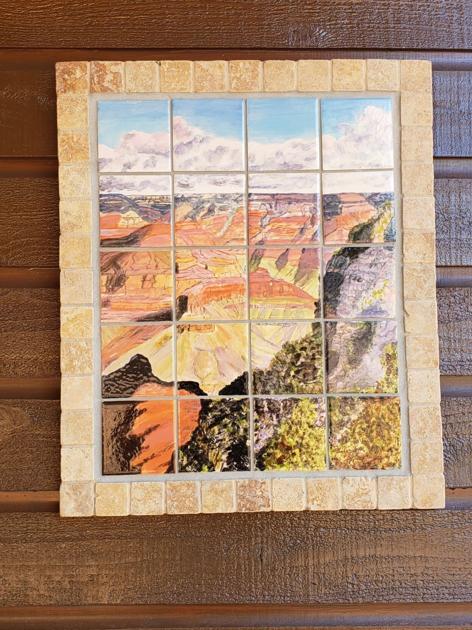My wife Martha is the undisputed craftsperson in our family. She makes beautiful tile table tops, realistic tile wall murals, and fantastic watercolor paintings. She knits sweaters, scarves, and mittens, and has created countless quilts. She has mended shirts, pants, and teddy bears for our family for well over 40 years, while I sheepishly admit that I have done none of that. Yet I know with certainty that I have done more mending than she has. Let me explain.
When I go fishing, which is often, I probably mend my line a hundred or more times a trip, usually without even thinking about it. No, my fly line isn’t broken, but I have to fix or mend my cast as it interacts with the water current.
Trout in a stream are used to seeing the bugs on top or in the water act in a particular manner. Those on top float as the current dictates. They will float at the speed of the current, unless they are trying to lay eggs or move off the surface. The very thin tippet and leader do not impede that drift as much as the heavier fly line does.
Dry fly fishers cast directly upstream or at a slight upstream angle to rising fish who are watching the surface for bugs that are floating by predictably. Mimicking that natural presentation is why we mend our line to create the impression that our fly is just like any other bug the trout has been eating.
Even though my fly line floats on the surface, it quickly interacts with the many other currents in the stream between the fly and me. Every time a current pulls on my fly line, it tugs the fly and causes it to act unnaturally and become much less attractive to the trout; even to the point of causing the fish to panic and stop feeding for a while.
To avoid this, I perform a technique called mending my line. After the cast, I observe the fly and my line to see if the fly looks like it will drag unnaturally. If that looks like it will be a problem, I lift my fly line but not my leader off the water, and in one gentle motion move my fly line one way or another to allow my fly a few more seconds of a natural drift.
I mend my line a lot when I fish downstream too; often with wet flies. An example is if I am targeting a deep undercut bank across the stream with a wooly bugger. Initially, I want my fly to sink down closer to the bottom where I think the fish will be. To accomplish this, right after I make the cross-stream cast, I mend my line upstream to allow the fly to sink without being tugged by the current. I can keep mending upstream and allow the fly to hug the stream bottom as it drifts under the bank, or I can flip the mend downstream and use the pull of the current on my fly line to speed up the fly. I do this quite often when I have reached the desired depth. I like to make my fly look like it is a fast swimming small fish trying to hurry through scary dark water.
I love to fish downstream in small, brushy streams because I can fish quite a while without having to make another cast. I accomplish this by mending my fly line. Sometimes that means I will simply change the direction of my fly and have it sweep into a new part of a pool or run with a mend to the right or the left. Other times I will strip in my fly and then mend it and release line to have it drift down another part of the creek without having to make another cast.
It might seem unnecessary to mend on a lake, but I do it often. One place that I love to target on a lake is the drop-off that parallels the bank. The resistance created by the heavy fly line creates the necessary friction on the water to allow me to parallel the bank for 30 or more feet with each cast. If you looked at my fly line in the water, it makes a curved right angle after my mend. So instead of my fly intersecting the drop-off briefly on a straight cast, I am in my target zone for the bulk of the time that my fly is in the water.
If you are new to fly-fishing or don’t quite have the handle on effective mending, a lake is a great place to practice this skill. If you can accomplish that drop-off following mend, you are all set for the creeks, and no sewing skills are required.
Credit: Source link































